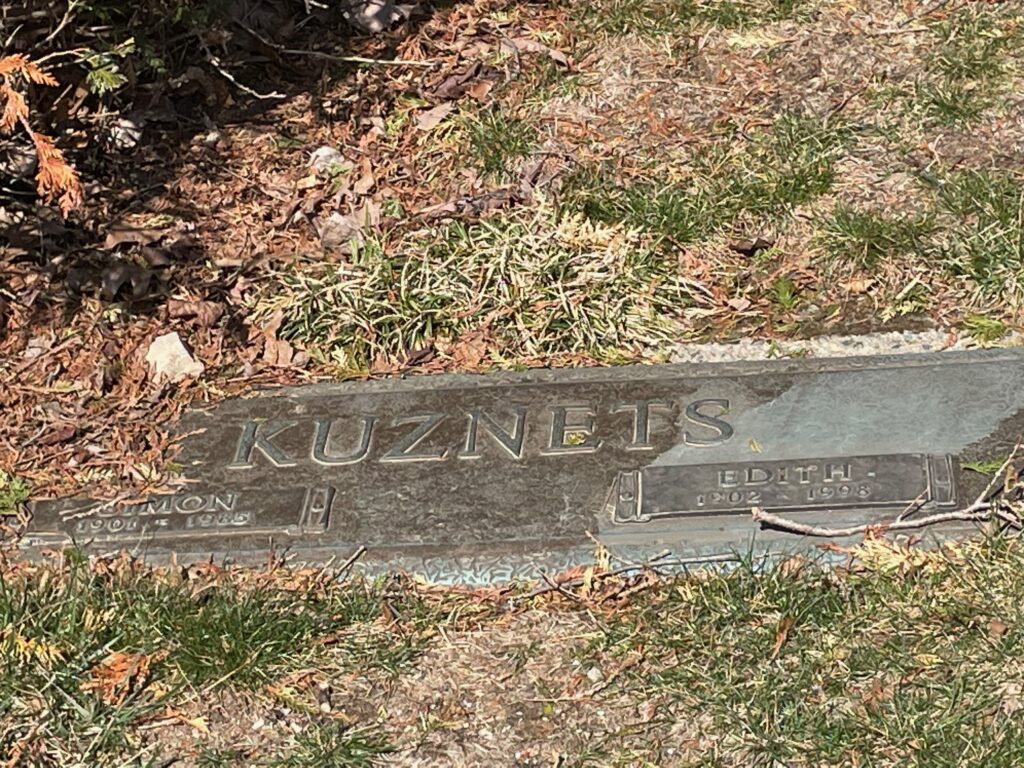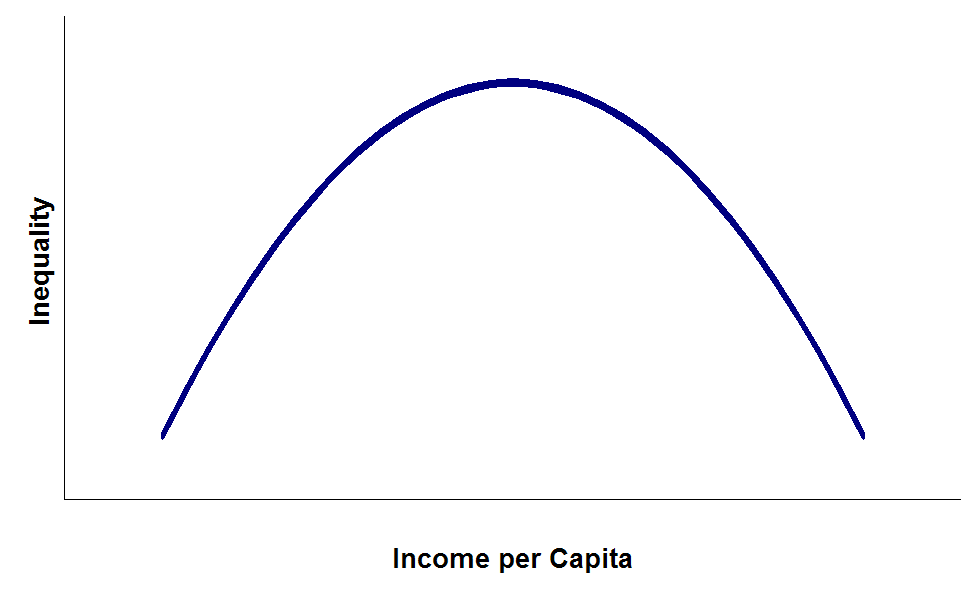Erik Visits an American Grave, Part 1,433
This is the grave of Simon Kuznets.

Born in 1901 is Pinsk, in what is now Belarus, Kuznets grew up in a Jewish intellectual family that had money. He got a good education and so the family did not move to the U.S. until 1922, shortly before the nation closed its doors to immigrants. He became interested in economics while at college at Kharkiv Institute of Commerce, where he was exposed to the ideas of Joseph Schumpeter. His life after the 1917 Revolution is a bit unclear but we know he worked as an economist for the USSR’s labor movement for awhile.
After Kuznets and his family came to the U.S., they settled in New York and I guess he had enough English because he immediately enrolled in at Columbia. They gave a bachelor’s degree in 1923, just I think as a credential so he could move on to graduate study. In fact, it only took until 1926 for him to earn his Ph.D. At this time, he was a scholar of Schumpeter’s theories. He was affiliated with the research staff at the National Bureau of Economic Research beginning in 1927 and he worked there until 1961. But that wasn’t exactly a full time job and so he still needed to teach, or at least be a professor at a university (when you get to Kuznets’ level, there’s not necessarily that much teaching taking place). So he worked at Penn from 1934 to 1954 and then was onto Johns Hopkins until 1960, finally going to Harvard, where he retired in 1971.
But these details are of minor importance, except for the fact that he taught Milton Friedman, giving him perhaps some responsibility for the monster and the monstrosity that the field of economics became. But the latter at least wasn’t really Kuznets’ fault. He was a pretty critical theory in mid-century economics and that included work in the New Deal. For one, while at the NBER, he helped work out the first real study of national income in the early 30s, so that was certainly useful. He established the Conference on Research, Income and Wealth in 1936 that brought academics and government planners together over these issues. He also was the associate director of the Bureau of Planning and Statistics between 1942 and 1944, providing key economic advice during World War II, particularly on the theoretical side of how to expand military production and its role that would have on the economy. In all of this, he was an important figure in the Keynesian era.
After World War II, Kuznets became involved in early Cold War anti-communist liberalism and worked with a lot of developing world nations to build up their economic apparatus, particularly around the ability to simply have the wherewithal to require necessary information. A lot of this was with American allies in east Asia, but included other nations around the world as well. He did a lot of work with the Social Science Research Council and spent the 1960s heading up its study of the Chinese economy.
What Kuznets is most known for is the Kuznets Curve, or at least this is what I most know him for. Basically, this was a curve that argued that in low-income countries, industrial growth led to greater economic disparity between the rich and poor and in high-income countries, it decreased it. Now, this is the kind of nonsense modeling that economists use a lot that is easily disproven, as for instance you can see in contemporary America, which has tremendous economic growth overall and rapidly growing income inequality. Nonetheless, this was tremendously influential. However, I have to say that the actual picture of the Kuznets Curve makes me laugh.

Deep!
To be fair, Kuznets himself said the data behind this was pretty shaky. But like every other model, it is pretty well countered or made a lot more complex at least through these things historians like to call “evidence.” See, when your discipline looks for evidence first instead of models first, you can find out things about the world. But hey, this is “science,” amirite, better give any economist access to the op-ed pages of our major newspapers!
Also, it is worth noting here in Kuznets’ favor that he strongly and corrected rejected the idea that nations going through industrialization all are on the same historical trajectory, which is so often used by shallow thinkers, and here I am thinking specifically of people such as Matt Yglesias, to justify inequality and workplace disasters in the developing world, even though those workers are making our products and are controlled primarily by conditions set by western corporations, by saying that these countries have different safety laws and that’s OK since they are at a different point in their history. Hooey. As such, Kuznets is one of the fathers of developmental economics.
There is certainly more to say about Kuznets’ career, but we have plenty of economists in comments so some of that can happen there if people choose.
For all of this, Kuznets won the Nobel Prize for Economics, by far the most ridiculous of the Nobel Prizes, in 1971. He died in 1985, at the age of 84.
Simon Kuznets is buried in Sharon Memorial Park, Sharon, Massachusetts.
If you would like this series to visit other winners of the Nobel Prize for Economics, you can donate to cover the required expenses here. Paul Samuelson is in Cambridge, Massachusetts and Wassily Leontief is in Salisbury, Connecticut. Previous posts in this series are archived here and here.


